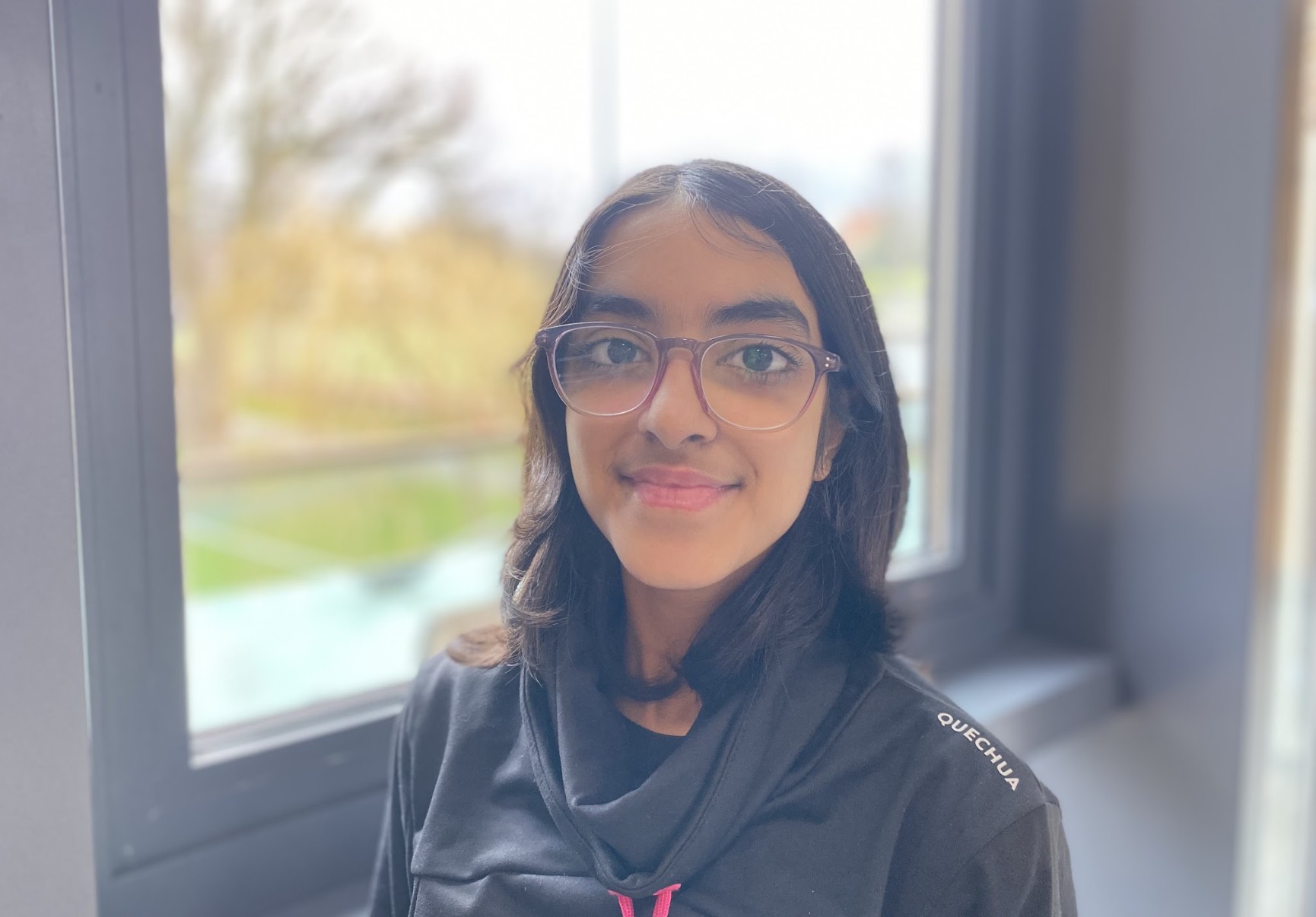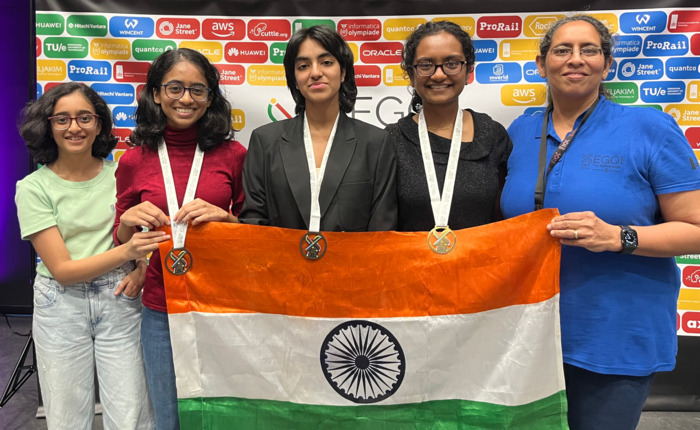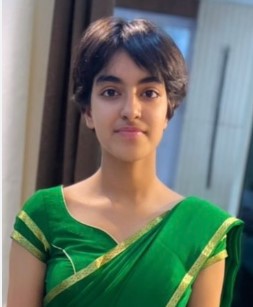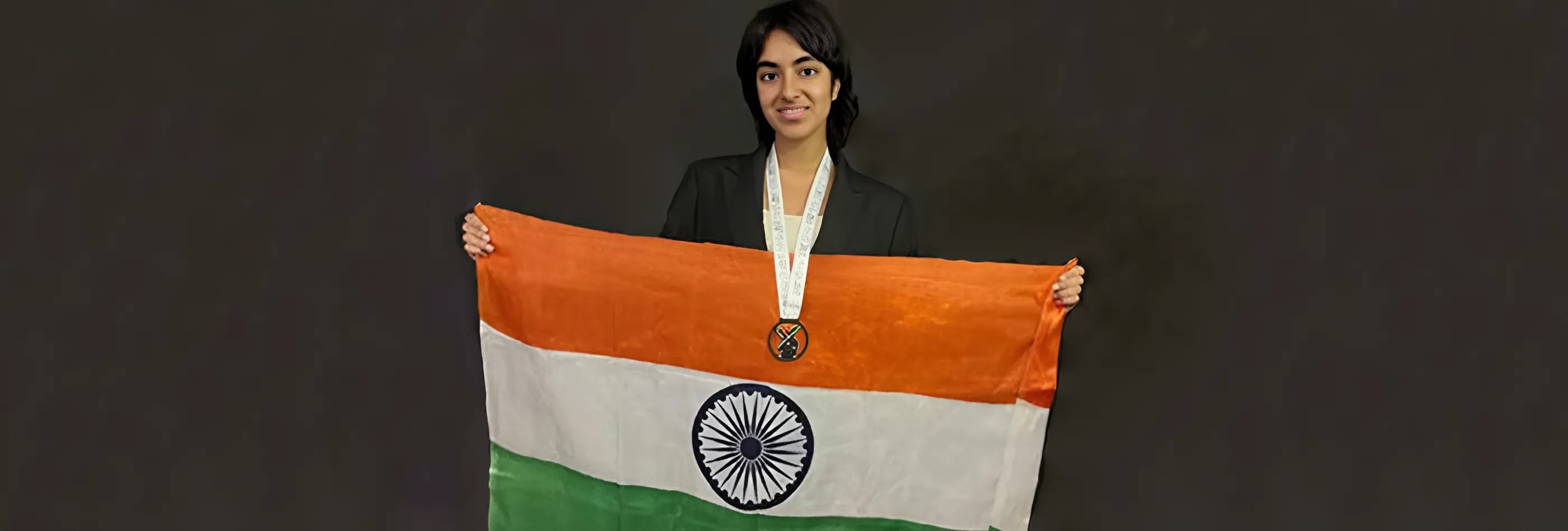(August 20, 2024) Indian-origin 17-year-old Aanya Goyal achieved another milestone by winning a silver medal for India at the European Girls’ Olympiad in Informatics (EGOI) held in July 2024 in the Netherlands. The Indian team registered its best-ever performance, securing one silver, two bronze medals, and one honourable mention. Aanya’s silver medal was instrumental in leading Team India to such remarkable success.
“I feel very proud to have won a silver medal for India at the Girls’ Olympiad in Informatics at a time when competitive programming is emerging as one of the most popular sports all over the world,” Aanya said after the win.
It’s not the first milestone for the Alleyn’s School pupil from South London. Four years ago, at the age of 13, she made history by becoming the youngest schoolgirl to be selected for the UK team to compete at the European Girls’ Mathematical Olympiad (EGMO).

Aanya Goyal
Competing against top coders
The STEM enthusiast competed against the top coders from 50 countries at the prestigious European Girls’ Olympiad in Informatics. She made use of her problem-solving skills to devise innovative solutions for the competition’s challenges.
The contest consisted of two five-hour sessions, each featuring four complex algorithmic design and coding challenges. “Five hours go by very quickly and is not quite enough time,” she said, talking about the tough competition.
According to EGOI rules, the implemented code must pass a set of sub-tasks within two to four seconds, requiring participants to excel in mathematics, creativity, and efficient coding under high pressure.
“Once I made to the team, I was fortunate to be part of the best team in the world,” Aanya said dedicating her medal to Team India’s coaching and support staff. “When you have such support, there is no choice but to prepare well and fight for the full 10 hours, from the first minute to the last.” Sonia Garcha was the leader of the Indian contingent.


Team India at 2024 European Girls’ Olympiad in Informatics held at the Netherlands
Finding support in her father
The maths-loving teen has always had the backing of her father, Amit Goyal, a former maths Olympiad winner. During the Covid-induced lockdown, Aanya used the extended period at home to focus on her passion for mathematical problem-solving. She undertook a series of exams conducted by the UK Mathematics Trust (UKMT) to succeed in the tough selection process for the European Girls’ Mathematical Olympiad (EGMO). That year, EGMO was hosted partly remotely in Georgia.
Every year, over 600,000 secondary school students across the UK participate in the UKMT challenges, with only the top 1,000 invited to the British Mathematical Olympiad. From this premier group, the top 100 are selected to advance to round two of the British Mathematical Olympiad which involves a three-and-a-half-hour competition featuring four challenging problems. Aanya earned a distinction and ranked among the top four girls chosen for the UK team for the EGMO, also becoming the youngest ever, breaking the previous record held by a 15-year-old.
Multifaceted teen
It’s not just the mathematics and informatics Olympiads that Aanya has participated in; she has also competed in the Linguistics Olympiad. Just as she prepared herself to solve the toughest combinatorics and number theory problems, she applied the same mindset to deciphering linguistics.


Aanya Goyal Team UK at the European Girls’ Mathematical Olympiad, held in Georgia in 2019
“The Olympiad problems are all about being creative and digging deep. Sometimes, a problem can take many days to solve but it is all about not giving up easily and to keep coming up with new ideas,” she mentioned. With EGOI, she embraced a new challenge that extended beyond problem-solving to problem design and implementation.
In her primary school years, Aanya was heavily into puzzles, crosswords, sudoku variants, and kakuro. In secondary school, she indulged in codebreaking, cipher challenges, chess, and linguistics. All these activities have been instrumental in developing her competitive skills.
Future goals – to make impact with maths and computer science
The 17-year-old plans to study mathematics and computer science at university. While maths remains her primary interest, she looks at computing and other applications of maths as an opportunity to work on some of the world’s problems and make it a better place.
“This is serious business for me and not a cliché. I am keen to have a career where I can utilise my skills to make a real impact. I also feel a certain weight of responsibility as a girl doing well in maths and computing Olympiads because sadly, when it comes to elite competitions in these subjects, men still comprise 95 percent of the field; that needs to change,” she remarked.
Challenging mindsets
At 13, after becoming the youngest female to be selected for the UK team to compete at the European Girls’ Mathematical Olympiad (EGMO), Aanya had remarked, “Many students do not give maths a real chance.” Holding adults responsible for instilling this mindset in young students, she had mentioned, “Adults keep repeating that maths is tough, and that is what people my age have heard all their lives, so some of them adopt it as a reality.” She added, “In England, adults constantly joke about being bad at maths, creating low expectations, so many students think it is okay to be bad at maths.”
Her advice to youngsters has been to keep on practising because not only does maths become easier through practice but also starts appearing as more exciting and rewarding. “But if you approach maths without confidence and without a real heart then it can become pointless and cold,” she remarked.


Aanya Goyal
Chak De! India
The London teen sees herself as ‘a proud Indian’ and finds motivation in songs like ‘Chak De India’ and ‘Ziddi Dil’ from the Bollywood biopics ‘Chak De! India’ and ‘Mary Kom.’ She listened to these songs to stay motivated during competition preparation. “India winning the T20 cricket World Cup and then the Indian IMO team finishing fourth provided additional motivation,” she remarked after bagging a silver for India last month.
To encourage more girls to be involved in designing the technologies of the future, the passionate STEM enthusiast aspires to serve as a role model to overcome societal bias by harnessing her skills and achievements.
- Follow Aanya Goyal on Twitter

